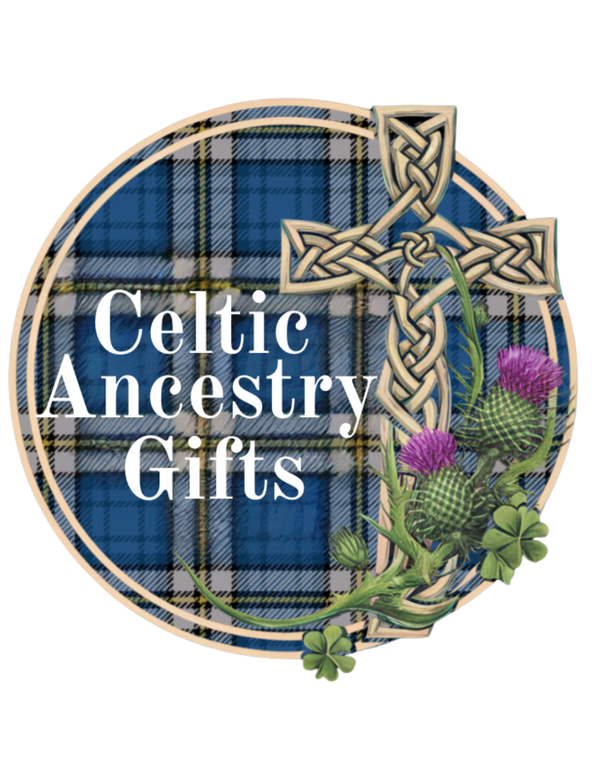
Clan Grant — The Stalwart Guardians of Strathspey
Share
1️⃣ Introduction
From the green glens of Strathspey to the high peaks of the Cairngorms, the name Grant resounds with strength, pride, and a fierce love for Scotland. For centuries, Clan Grant has stood as one of the Highlands’ most loyal and honourable families — a clan that built communities, defended its lands, and shaped the course of Scottish history.
Their motto, Stand Fast, reflects more than courage in battle — it speaks of resilience, unity, and devotion to kin and country. To bear the name Grant is to inherit not only the spirit of the Highlands but also the wisdom of leadership and steadfast faith.
This is the story of Clan Grant, the guardians of Strathspey, whose loyalty and courage have made them legends of the Highlands.
2️⃣ History & Origins
The Early Lineage — Normans, Celts, and Royal Service
The origins of Clan Grant are a tapestry woven from both Norman and Celtic threads. Historians suggest that the first Grants may have come to Scotland from Normandy in the 12th century, settling during the reign of King David I (1124–1153), as many Norman families did.
The earliest known ancestor was Gregory le Grand, whose name later evolved to Grant. His descendants held lands in Stratherrick and Strathspey, eventually becoming one of the principal clans of Inverness-shire and Moray.
Some Gaelic traditions claim a different beginning — that the Grants descended from the Celtic Siol Alpin, the kin group that also produced clans such as the MacGregors and MacKinnons. Whether Norman or Celtic, by the 13th century the Grants had become firmly Highland in identity, their fortunes tied to the mountains and glens of northern Scotland.
The Rise of the Grants of Strathspey
The Grants’ true power base was established in Strathspey, a fertile valley through which the River Spey winds its way northward. From their seat at Castle Grant, near Grantown-on-Spey, the clan chiefs ruled extensive lands and commanded the loyalty of thousands of clansmen.
Their influence stretched across Inverness-shire, Morayshire, and Banffshire, making them one of the most substantial landholding families in the north.
The Grants of Freuchie, later ennobled as the Lairds and Earls of Seafield, became the principal line, while cadet branches such as the Grants of Ballindalloch, Rothiemurchus, and Glenmoriston developed their own proud heritages.
3️⃣ The Grants in Scotland’s Wars
The Wars of Independence
The Grants stood loyally for Scotland during the Wars of Independence in the 13th and 14th centuries. They supported Robert the Bruce, and their valour in battle earned royal favour and expanded estates.
The Civil Wars and Jacobite Era
During the turbulent 17th and 18th centuries, the Grants often walked a careful line between loyalty to the crown and kinship with the Jacobite cause.
In the Jacobite Rising of 1715, the Grants largely supported the government, fighting on the Hanoverian side under their chief, Ludovick Grant of Grant. In contrast, some cadet branches, notably the Grants of Glenmoriston, joined the Jacobites in both the 1715 and 1745 risings, fighting bravely for Prince Charles Edward Stuart — the “Bonnie Prince Charlie.”
Though divided in those years, the clan’s sense of honour remained intact. The Grants were known for their fairness in conflict and their dedication to preserving peace in the Highlands when possible.
4️⃣ Spelling Variations & Related Names
As with many ancient Scottish names, the spelling of Grant has varied over time. Historical forms and variants include:
-
Grant
-
Graunt (archaic form)
-
Le Grant (Norman-French)
-
McGrahunt (rare Gaelic variant)
Related or allied families often took the name Grant as a patronymic, particularly in the north of Scotland, where the clan’s protection and leadership inspired loyalty.
The Gaelic form of the name is Granndach, and the clan is known in Gaelic as Clann Grannda — the Children of Grant.
5️⃣ Landmarks & Regions Associated with Clan Grant
Castle Grant
At the heart of the clan’s power stands Castle Grant, near Grantown-on-Spey in Morayshire. Originally known as Freuchie Castle, it was renamed in the early 17th century when the surrounding lands became formally recognized as the Barony of Grant.
Castle Grant remains one of the great Highland seats of Scotland — its grey stone towers rising above pine forests and glens that have belonged to the family for over 600 years.
Grantown-on-Spey
Founded in 1765 by Sir James Grant, Grantown-on-Spey became a model Highland town — built to provide homes, work, and opportunity for local people after the Highland Clearances. This act of compassion and foresight earned Sir James the title the Good Sir James Grant, remembered for his humanitarian leadership.
Other Clan Sites
Other notable Grant landmarks include:
-
Ballindalloch Castle, the seat of the Ballindalloch Grants, still inhabited by descendants of the family.
-
Rothiemurchus Estate, famed for its forests and natural beauty, long associated with the clan.
-
Duthil Kirk, the clan burial ground, where generations of Grant chiefs are laid to rest.
These places, nestled amid the Speyside glens and pine woods, are sacred to the clan’s history and heritage.
6️⃣ Migration & Modern Presence
The Grant Diaspora
Like many Scottish clans, the Grants saw members leave their homeland during the 18th and 19th centuries. Some emigrated to Canada, where they became prominent settlers in Nova Scotia and Ontario. Others went to America, Australia, and New Zealand, carrying with them the clan motto Stand Fast as both a blessing and a command.
In Canada, the name Grant became synonymous with enterprise and leadership — found among explorers, merchants, and public servants. In the United States, the surname gained further renown with Ulysses S. Grant, the American Civil War general and later president, whose ancestors were Scottish.
Clan Grant Today
Today, the chief of Clan Grant remains one of the recognized Scottish clan chiefs, bearing the title The Right Honourable the Earl of Seafield.
The Clan Grant Society and affiliated international groups continue to keep the clan spirit alive through gatherings, heritage events, and cultural preservation projects.
The clan tartan, a striking pattern of deep red, green, and navy, symbolizes both Highland loyalty and the fertile lands of Strathspey. It remains one of the most recognizable tartans in Scotland.
7️⃣ Fun Fact
Clan Grant has long been admired for its harmony and hospitality. In the 18th century, visitors to Strathspey remarked that the Grants were among the most united clans in the Highlands — rarely feuding among themselves and known for their kindness to neighbours.
Their rallying cry, Craig Elachie! (pronounced “Craig Ellachie”), comes from the rocky hill that rises above the River Spey — the clan’s ancient gathering place. When danger called, the Grants would light a beacon there, summoning their people to “stand fast” for kin and country.
To this day, the words “Stand Fast, Craig Elachie!” remain the proud battle cry of Clan Grant, echoing through centuries of Scottish history.
💚 Search your family name in the search bar above to explore your clan gifts. We offer surname gifts on multiple products like mugs, t-shirts, blankets, ornaments, wall art, phone cases, magnets, flags, and more.

